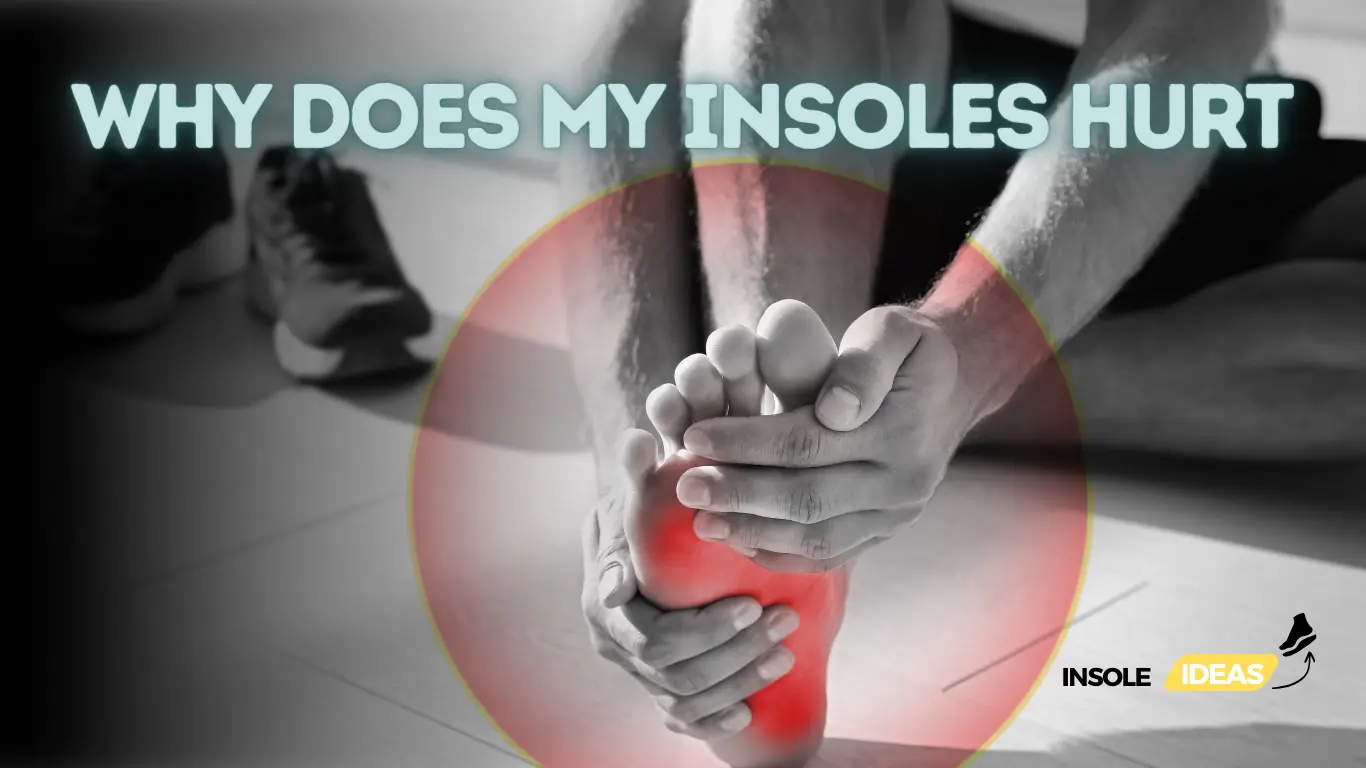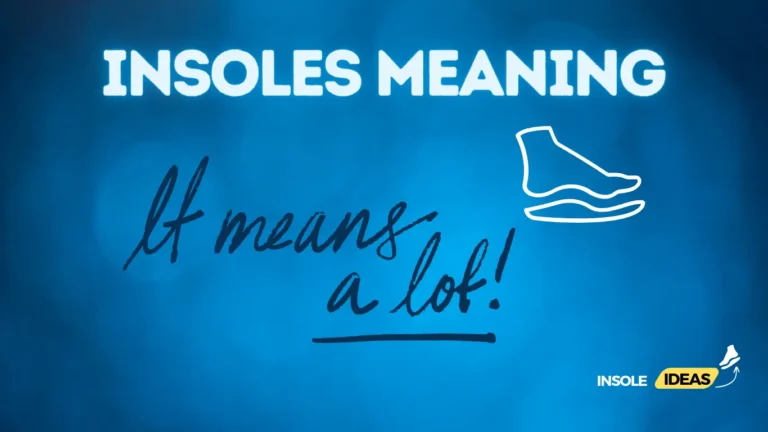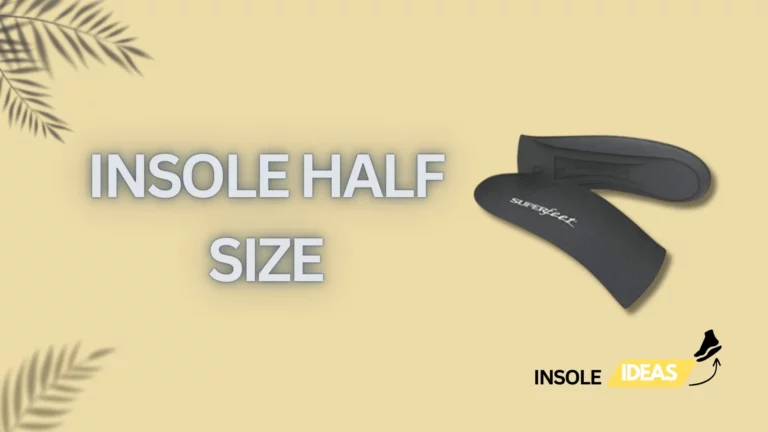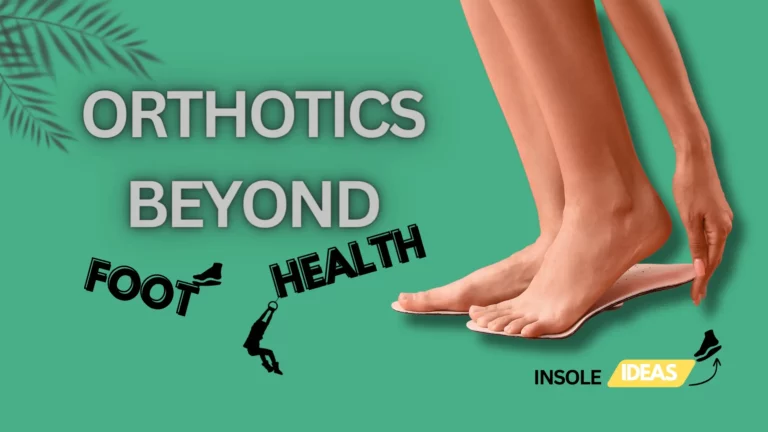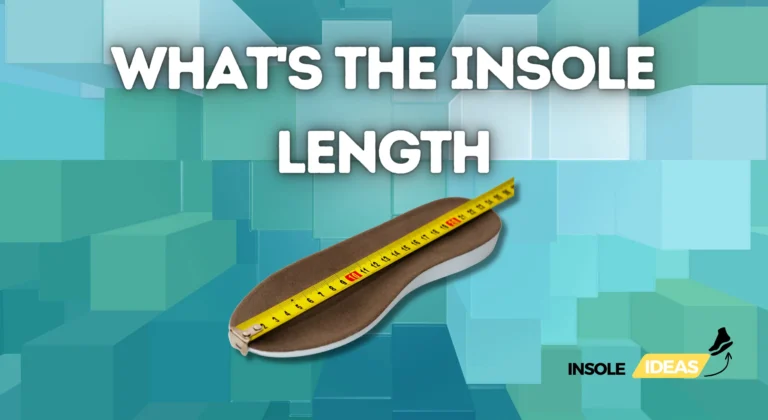Understanding and Alleviating Insole Pain: A Comprehensive Guide
Definition of Insoles
Insoles, or footpads or shoe inserts, are removable cushions placed inside shoes to provide additional support, cushioning, and comfort to the feet. They are designed to enhance the shoe’s fit and alleviate foot-related issues. Insoles come in different materials, shapes, and thicknesses to cater to individual needs and preferences. Some common types include arch support insoles, gel insoles, and orthotic insoles.
Importance of Comfortable Insoles
Comfortable insoles play a crucial role in maintaining overall foot health and well-being. They help distribute pressure evenly across the foot, reduce strain on muscles and joints, and minimise the risk of blisters, calluses, and plantar fasciitis. Providing proper support and alignment, comfortable insoles can improve posture and alleviate pain in the feet, ankles, knees, and lower back.
Common Issues: Insole Pain
Insole pain refers to discomfort or soreness experienced in the feet due to wearing improperly fitting or low-quality insoles. This can manifest as sharp or dull pain, burning sensation, or numbness in the arches, heels, or balls of the feet. Insole pain can significantly impact daily activities, reducing mobility and productivity. Common causes of insole pain include inadequate arch support, poor cushioning, and incorrect sizing. It is essential to address insole pain promptly to prevent further complications and ensure optimal foot health.
Assessing Your Insole Pain
When experiencing insole pain, it’s crucial to assess the symptoms thoroughly to determine the underlying cause and find appropriate solutions. Here are some essential steps in evaluating your insole pain:
Identifying Symptoms
Take note of any discomfort or pain experienced while wearing shoes with insoles. Symptoms may include sharp or stabbing pain, aching, burning sensation, numbness, or tingling in specific areas of the foot, such as the arches, heels, or balls of the feet. Pay attention to whether the pain worsens with activity or improves with rest.
Analysing Footwear
Evaluate the shoes you wear regularly and examine the condition of the insoles. Check for signs of wear and tear, such as flattened cushioning, visible indentations, or uneven pressure distribution. Assess whether the shoes provide adequate support, cushioning, and stability for your feet and walking gait.
Consulting a Specialist
If insole pain persists or becomes severe, it’s advisable to seek professional guidance from a podiatrist or orthopaedic specialist. A healthcare provider can thoroughly examine your feet, assess your gait and biomechanics, and recommend appropriate treatments or interventions to alleviate insole pain. They may also suggest diagnostic tests, such as X-rays or gait analysis, to identify underlying foot conditions contributing to the pain.
Steps to Alleviate Insole Pain
Addressing insole pain involves a combination of preventive measures, lifestyle adjustments, and targeted interventions to provide relief and promote foot health. Here are some effective steps to alleviate insole pain:
Proper Footwear Selection
Choosing shoes with the right fit is crucial for preventing insole pain. Consider shoe size, width, toe box room, and overall design. Opt for shoes that provide adequate arch support, cushioning, and shock absorption to minimise pressure on the feet and reduce the risk of pain and discomfort.
Choosing the Right Size
Ill-fitting shoes can exacerbate insole pain by causing friction, pressure points, and foot misalignment. Ensure that your shoes fit comfortably with enough room for your toes to wiggle and move freely. Avoid shoes that are too tight or loose, as they can lead to various foot problems, including insole pain.
Optimal Arch Support
Supportive footwear with proper arch support can help distribute weight evenly across the foot and reduce strain on the arches. Look for shoes with built-in arch support, or use orthotic inserts to provide additional support and stability for your feet.
Material Considerations
The choice of shoe materials can also impact insole comfort and support. Opt for shoes made from breathable, flexible materials that allow for natural foot movement and ventilation. Avoid shoes with rigid or stiff construction, as they can restrict movement and cause discomfort over time.
Professional Solutions for Insole Pain
Seeking professional help can be instrumental in effectively addressing insole pain, especially for individuals with persistent or severe symptoms. Here are some professional solutions commonly recommended for managing insole pain:
Podiatric Consultation
A podiatric consultation involves an assessment by a foot specialist known as a podiatrist. During the consultation, the podiatrist may perform various evaluations and recommend appropriate treatments to alleviate insole pain.
Gait Analysis
Gait analysis is a diagnostic tool podiatrists use to assess how an individual walks or runs. By observing the gait pattern and foot mechanics, the podiatrist can identify abnormalities or imbalances that may contribute to insole pain. Gait analysis helps tailor treatment plans, such as recommending specific footwear or orthotic devices, to improve walking efficiency and reduce discomfort.
Custom Orthotics
Custom orthotics are specially designed shoe inserts or insoles customised to fit an individual’s feet’ unique shape and biomechanics. A podiatrist may prescribe custom orthotics to provide targeted support, cushioning, and alignment correction, addressing underlying factors contributing to insole pain. Custom orthotics can help redistribute pressure, alleviate strain on sensitive areas, and improve overall foot function and comfort.
Physical Therapy Interventions
Physical therapy interventions can play a vital role in managing insole pain, particularly for individuals with musculoskeletal issues or biomechanical abnormalities. A physical therapist can design personalised exercise programs focusing on strengthening and stretching specific muscles and joints to improve foot function, mobility, and pain relief. Additionally, manual therapy techniques such as massage, joint mobilisation, and therapeutic modalities like ultrasound or electrical stimulation may alleviate pain and promote healing.
Medical Procedures for Severe Cases
In severe cases of insole pain refractory to conservative treatments, medical procedures may be considered as a last resort. These procedures may include corticosteroid injections to reduce inflammation and pain, extracorporeal shockwave therapy (ESWT) to stimulate tissue repair and alleviate chronic pain, or surgical interventions such as plantar fascia release or bunionectomy to address underlying structural abnormalities contributing to insole pain. These interventions are typically reserved for cases where conservative measures have failed to provide adequate relief, and the benefits outweigh the risks.
Understanding Insole Materials
Insole materials play a crucial role in determining shoe inserts’ comfort, support, and durability. Understanding common insole materials’ characteristics and pros/cons can help individuals make informed decisions when selecting the right insoles for their needs.
Common Insole Materials and Their Pros/Cons
1. Foam:
Pros: Foam insoles provide lightweight cushioning and shock absorption, making them suitable for everyday use. They are affordable and offer immediate comfort.
Cons: Foam insoles may compress over time, losing their effectiveness in providing support. They may also lack durability, especially in high-impact activities.
2. Gel:
Pros: Gel insoles offer superior cushioning and shock absorption, reducing pressure on the feet and joints. They provide excellent support and comfort for individuals with foot conditions or standing for long periods.
Cons: Gel insoles tend to be thicker and bulkier, which may affect the fit of tight-fitting shoes. They may also retain heat, potentially causing discomfort in hot climates.
3. Memory Foam:
Pros: Memory foam insoles contour to the foot’s shape, providing customised support and cushioning. They offer excellent pressure relief and reduce friction, making them ideal for individuals with sensitive feet.
Cons: Memory foam insoles may lose their shape and supportiveness over time, requiring frequent replacement. They may also retain moisture, leading to odour and bacterial growth.
4. Polyurethane (PU) Foam:
Pros: PU foam insoles are durable and resilient, maintaining their shape and supportiveness even after prolonged use. They offer good shock absorption and cushioning, suitable for various activities.
Cons: PU foam insoles may be less breathable than other materials, potentially causing discomfort in hot and humid conditions. They may also be firmer initially, requiring a break-in period for optimal comfort.
Impact of Material Choice on Comfort and Support
Choosing insole material can significantly impact the overall comfort and support of the feet. Factors such as cushioning, stability, breathability, and durability should be considered when selecting insoles. Individuals with specific foot conditions or activities may benefit from certain materials more than others. Experimenting with different insole materials and designs can help find the perfect balance of comfort and support for individual needs.
Summary
In conclusion, addressing insole pain is essential for maintaining foot health and overall well-being. This comprehensive guide has explored various aspects of insole pain, its causes, assessment methods, and effective relief solutions. Let’s recap the key points discussed and emphasize the importance of addressing insole pain promptly.
Recap of Key Points
Causes of Insole Pain: Insole pain can arise from poor fit, material quality, and underlying foot conditions. Identifying the root cause is crucial for effective management.
Assessment Methods: Assessing insole pain involves identifying symptoms, analysing footwear, and consulting a specialist, such as a podiatrist, for a thorough evaluation.
Effective Solutions: From proper footwear selection to professional interventions like custom orthotics and physical therapy, there are various solutions available to alleviate insole pain and improve foot comfort.
Preventive Measures: Regular foot checks, rotating footwear, and proper insole maintenance are essential preventative measures to minimise the risk of insole pain and related foot problems.
Importance of Addressing Insole Pain Promptly
Addressing insole pain promptly is crucial for several reasons:
1. Prevention of Complications: Ignoring insole pain can lead to worsening symptoms and potential complications such as foot deformities, chronic conditions, and decreased mobility.
2. Enhanced Comfort and Mobility: Prompt intervention can provide immediate relief from discomfort, allowing individuals to resume their daily activities with improved comfort and mobility.
3. Prevention of Further Damage: Early detection and treatment of underlying foot conditions contributing to insole pain can prevent further damage and deterioration of foot health.
4. Improved Quality of Life: By addressing insole pain promptly, individuals can enjoy a better quality of life with reduced pain, improved mobility, and enhanced overall well-being.
Conclusion
Insole pain is a common issue that can significantly impact daily life and overall foot health. By understanding the causes, assessing symptoms, and implementing effective solutions, individuals can alleviate insole pain and prevent future discomfort. Prompt intervention addresses insole pain, prevents complications, and improves overall foot comfort and mobility. Remember to priorities foot health and seek professional guidance for personalized treatment and care. With proper attention and care, individuals can enjoy greater comfort and mobility, ensuring a happier and healthier lifestyle.

